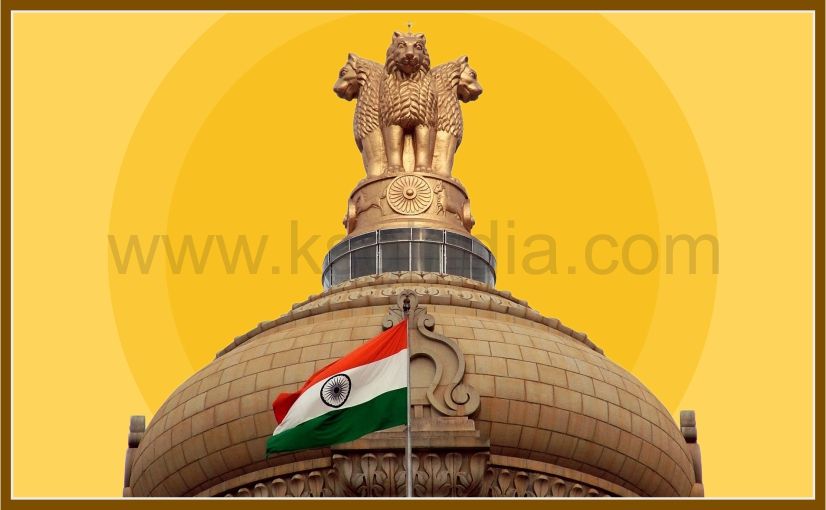Transgender Person (Protection of Rights) Act, 2019
The Transgender Persons (Protection of Rights) Act, 2019, with an objective of protectingthe rights of transgender persons and their welfare, has come into force on 10th January 2020
Transgender Person (Protection of Rights) Act, 2019
News Excerpt
The Transgender Persons (Protection of Rights) Act, 2019, with an objective of protectingthe rights of transgender persons and their welfare, has come into force on 10th January 2020
Doctrine of Adverse Possession
|
Pre Connect
- Traditionally, Transgender held significant position in the Indian History. They played significant roles in collecting taxes and duties in the Sultanate and Mughal courts.
- However, they were specifically targeted under the British Colonial rule through provisions like Section 377 of Indian Penal Code. The controversial section was the reflection of the British 1533 Buggery Act. Since then their marginalization and oppression began.
- In India, there exists a large number of socio-culture groups who identify themselves as like – shiv-shaktis, jogtas, jogappas, Aradhis, Sakhi, etc.
- The major challenge transgender faced after independence was civil personhood. Gender identity was made a crucial component of civil identity and government refused to recognize transgender as women or a third sex, the community was deprived of several important rights such as right to vote, own property, marry, education, etc. All this happened despite the presence of Article 14, 15, 21 and 23 of Indian constitution which explicitly prohibits discrimination on the base of “Sex” among other determinants.
- After decades of legal fight for their justice, the Supreme Court of India finally struck with two progressive landmark judgments. In 2014, the Court recognised the third gender and affirmed the constitutional rights of transgender persons in NALSA v. UOI. In 2018, the Court overruled Section-377 IPC on the basis that it violated fundamental rights enshrined within the Indian Constitution.
Highlights of the ACT
- The act aims to end discrimination against transgender persons in access to:
- Education
- Employment
- Healthcare
- It also provides several rights such as right to:
- Movement
- Reside
- Rent
- Occupy property
- Reside with parents and immediate family members
- It provides equal opportunity in:
- Hold public or private office
- Enjoyment of goods and facilities,
- Use of Public places
- It provides for National Council for Transgender Persons to advise, monitor and evaluate measures for the protection of their rights.The Council will also consist of five members from the transgender community and five experts from non-governmental organizations.
- The act criminalises denial of use of public places to transgender, removal of transgenders from household and village, etc.
- On the issue of identity, it provides that a transgender person may make an application to the District Magistrate for a certificate of identity, indicating the gender as ‘transgender’. A revised certificate may be obtained only if the individual undergoes surgery to change their gender either as a male or a female.
Analytica
Merits:
- It will make all the stakeholders responsive and accountable for upholding the principles underlying the act.
- It will bring greater accountability on the part of the Central Government and State Governments/Union Territories Administrations for issues concerning Transgender persons.
- It will benefit a large number of transgender persons, mitigate the stigma, discrimination and abuse against this marginalized section and bring them into the mainstream of society.
- It will lead to greater inclusiveness and will make the transgender persons productive members of society.
Concerns:
- Issue of Self Identification:
- There are serious concerns that the act violates the very basic right of self-identification (identifying one’s gender as male, female, or third gender). Identification from District Magistrate Screening committee is seen as a violation of the same.
- Further, since the committee providescertificate to an individual who has undergone a sex reassignment surgery. If one has not undergone sex reassignment surgery, one can only be identified as transgender, not as male or female. Transgender people believe this is coercing them into surgery whereas the demand for free or low-cost sex reassignment surgery has also not been met.
- No Deterrence: The provision for punishment for serious crimes committed against transgender people is substantially less severe than for the same crimes committed against cisgender people.
- No Reservation: The act also denies reservation to transgender, intersex and gender non-conforming people, and requires them to be living with their birth families which are the site of physical and psychological violence in most cases.
- Applicability to private entities: There are no penal consequences in the event such private entities do not comply with the provisions of the act.
Way Forword
- Gender-sensitization should work in parallel with legal reform.
- It is also necessary that the transgender community holds internal debates and addresses issues that cause discrimination within the community.
- Political movements that talk about marginalized people must urgently include transgender persons.
- Hence, India has a long road ahead to gender justice, and the transgender community wants concerted efforts made to bring about legal reform so that transgender people are as free and empowered in their public and private lives like any other citizen of India.
PEPPER IT WITH
NALSA Vs Union of India, Article 14, Article 21, Yogyakart.


